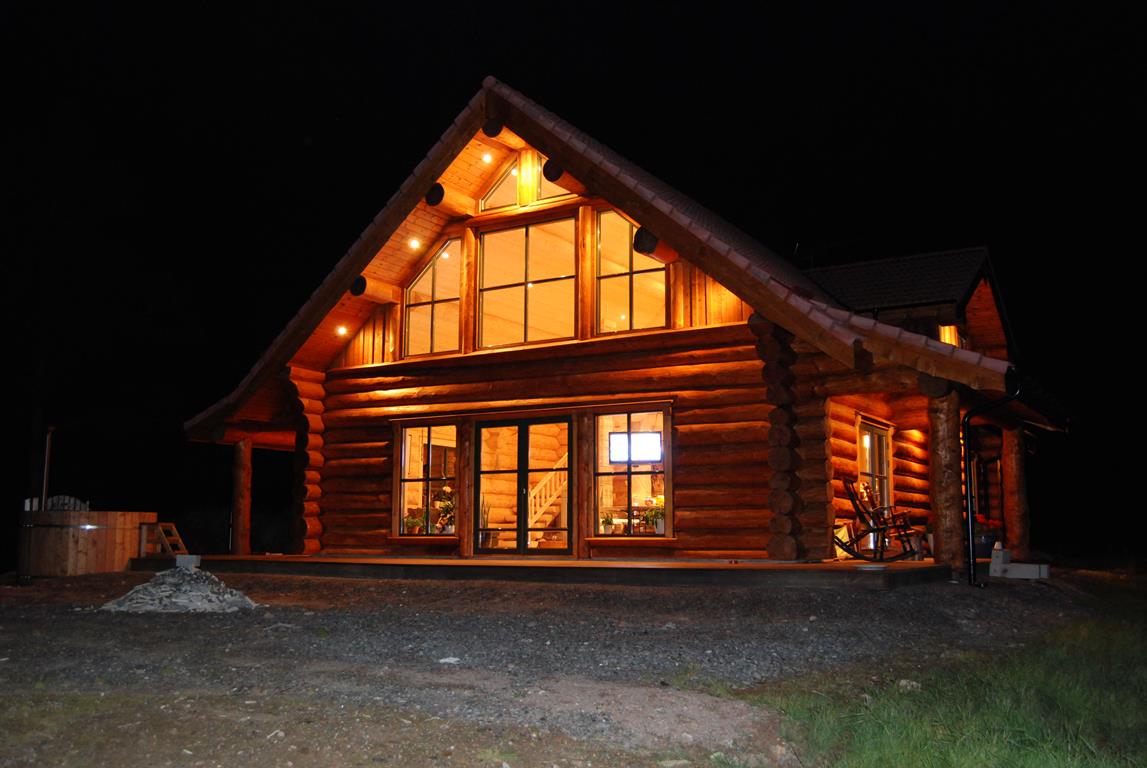A log home is a costly major undertaking that materialises big dreams.
Our background information ensures that you get the most for your money. The more you know, the more precise your questions are, the quicker you will find the right builder and solution.
When you consider the six points listed here, you can be proud of your decision even decades later.
If any of the points raise questions, do not hesitate to contact us. We have over 21 years of experience, therefore we know the subject well.
1. Consider the cost and quality of construction materials
The price offer must list all construction materials used for building the log home as differences in material quality result in significantly different prices.
If ecological concerns are a priority check that all materials are environment friendly.
To save space and money, log home dividing walls are often built using wood frames. Covering the wood frame is possible with cheaper gypsum plasterboard or ecological, but more expensive Fermacell boards.
2. Check that transportation and installation is included in the price
Check that the price calculation clearly shows transportation costs of the building materials.
If no cost is shown, usually a couple of thousand Euros will be added to the end price.
Accommodation costs of workers or crane rental might be added too, if these are not shown separately in the offer. These costs may add around three to four thousand Euros to the offer.
Check whether the described works also include the installation of materials.
If you want to do the installation yourself, find out whether material costs mean raw materials or prefabricated elements.
3. Check the completeness of the home
Most misunderstandings between the client and builder of log homes concern the completeness of the building, meaning to which construction stage the builder builds the home.
The most typical are closed shell – finished exterior and turnkey solutions. The client and builder can agree on any desired stage of completeness.
Problems do mostly not occur with the exterior log walls, but with other more detailed constructions such as roofs, intermediate ceilings and dividing walls.
The log home builder may offer intermediate ceilings consisting of beams only, whereas the client may mean, beams, floor boards, insulation, vapour barrier paper, ventilation and boarding. And maybe even paint which has thrice the cost of what the builder offered.
4. Do a thorough background check
Materials and completeness are objective criteria that can be clearly defined and are only a problem with insufficient discussion.
Price offers can differ on subjective grounds too. The builder’s quality of workmanship is not visible from the offer.
This means you’ll have to do some research and look into the company’s background.
If possible, get feedback from previous clients. Check the company’s debts and whether it has paid taxes on wages.
Background checks help avoid losing deposits paid.
5. Ask for clarification on the payment schedule
Companies requesting deposits must explain how the deposit will be used.
Be wary if an immediate deposit is requested and final payment only after all work has been completed.
6. Ask for the offer offer for each construction stage
Offers are easier to compare if asked for each stage separately.
- Define the first stage as exterior walls and an uninsulated roof structure.
- The next stage should consist of finishing the roof as well as adding windows and exterior doors.
- The third stage should include all interior works.
A log home offer understood equally well by the provider and client is a detailed, lengthy document. The offer should therefore not fit on two-three pages.
Window specifications alone offer numerous opportunities. Windows can be openable or closed and differences can exist in terms of layers, colours and type.
Finishing involves even more details, possibilities and options.
Clients want a keys in the pocket price for budget considerations, but spending on finishing is contingent upon available resources.
In initial stages, little emphasis should be placed on finishing: additional investments on finishing will not compensate poor base construction and later repairs, if possible, will certainly be costly.
PS! Remember what we said in the introduction about if you have any questions about any of these points?
If you found the article useful, please click “Like” and if it might be interesting to your friends, click on “Share”. Thanks for the feedback!

